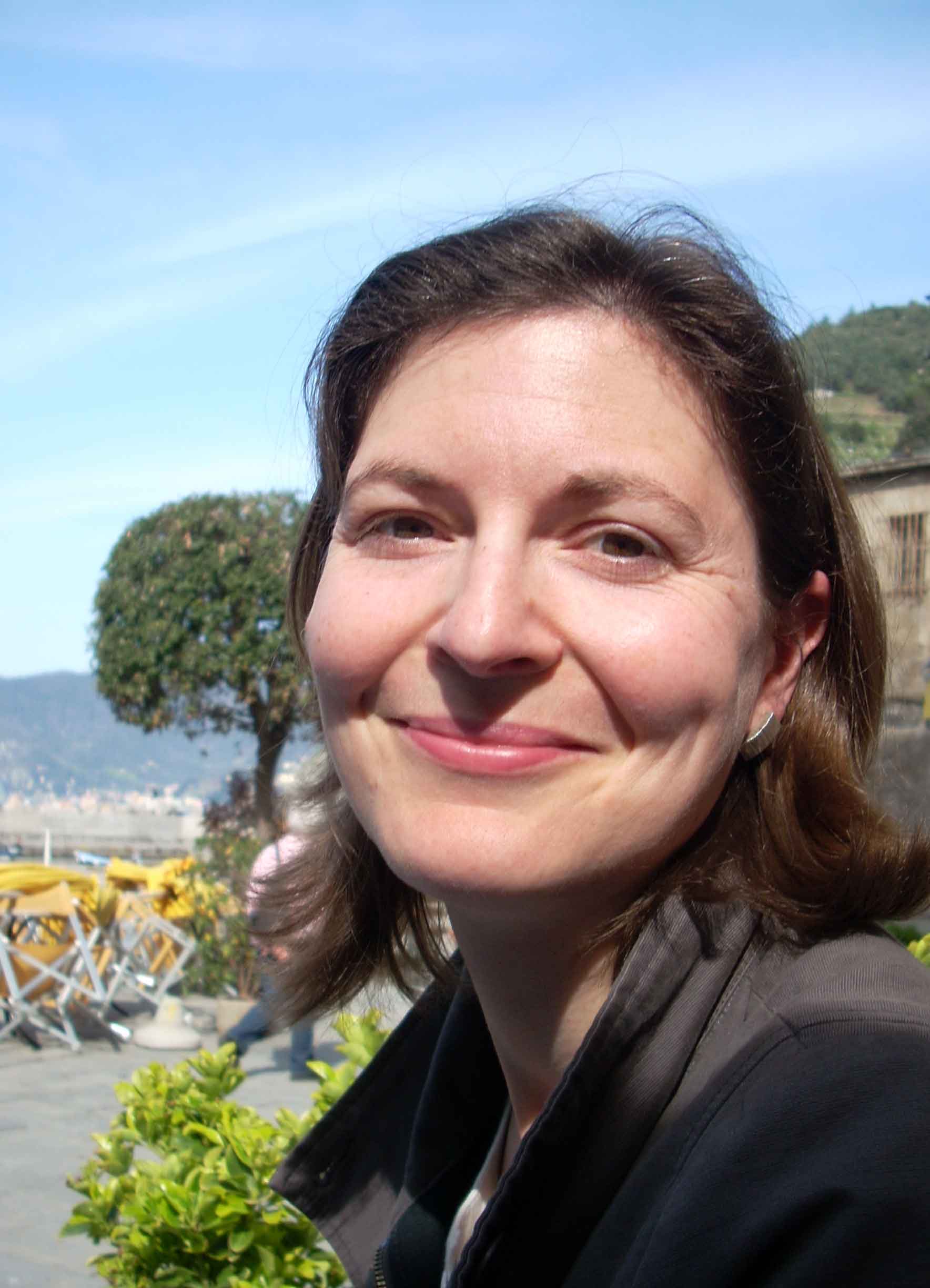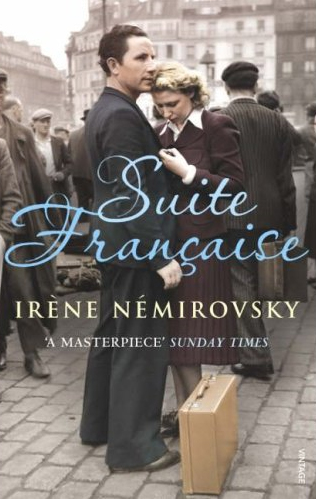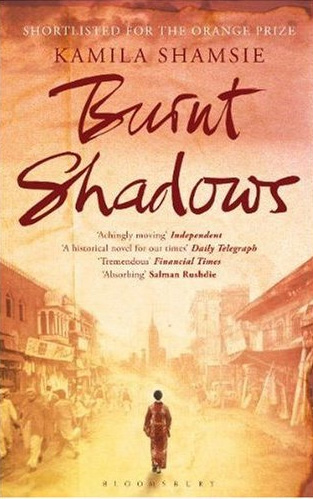 Rebecca Carter is an editor of fiction and non-fiction at the Random House imprint Harvill Secker, a list that aims to continue the tradition, once announced in an advertisement for Secker, of publishing “international quality literature with a wayward streak”. She has a particular love of unusual narrative history, and novels that explore hidden corners of the past (or present). Of her ‘books of the decade’ only Némirovsky’s Suite Française is published by her.
Rebecca Carter is an editor of fiction and non-fiction at the Random House imprint Harvill Secker, a list that aims to continue the tradition, once announced in an advertisement for Secker, of publishing “international quality literature with a wayward streak”. She has a particular love of unusual narrative history, and novels that explore hidden corners of the past (or present). Of her ‘books of the decade’ only Némirovsky’s Suite Française is published by her.
Other books she has edited include Dai Sijie’s Balzac and the Little Chinese Seamstress, Atiq Rahimi’s Earth and Ashes, Gerard Woodward’s August trilogy, Ma Jian’s Beijing Coma, Javier Marías’s Your Face Tomorrow, Diana Evans’s 26a, Tom Reiss’s The Orientalist, Faïza Guène’s Just Like Tomorrow, Tim Butcher’s Blood River and Xiaolu Guo’s A Concise Chinese–English Dictionary for Lovers.
Saira Shah – The Storyteller’s Daughter: one woman’s return to her lost homeland (2003)
 Early on in the decade, post 9/11, there was a scramble among publishers to find books that would illuminate for readers the situation in Afghanistan. One of the first, and a book that taught me so much I didn’t know but should have done, was journalist Saira Shah’s intelligent and moving memoir, which intertwined the story of her own adventures in Afghanistan (familial, personal and journalistic) with a heart-felt history of the region.
Early on in the decade, post 9/11, there was a scramble among publishers to find books that would illuminate for readers the situation in Afghanistan. One of the first, and a book that taught me so much I didn’t know but should have done, was journalist Saira Shah’s intelligent and moving memoir, which intertwined the story of her own adventures in Afghanistan (familial, personal and journalistic) with a heart-felt history of the region.
Irène Némirovsky – Suite Française (2006)
 When the French publisher of this remarkable, previously undiscovered novel about occupied France sent me a copy, I had no idea that I was about to embark on an extraordinary journey of discovery into the life and work of Irène Némirovsky. Through reading her novels, most of them published in France during the thirties and early forties, I have come to understand so much more about the Russian pogroms of the late nineteenth century and early twentieth, and what it was like to sink or swim in the high capitalist society of early twentieth-century Europe. Many lessons for our own era. And such wonderful storytelling too.
When the French publisher of this remarkable, previously undiscovered novel about occupied France sent me a copy, I had no idea that I was about to embark on an extraordinary journey of discovery into the life and work of Irène Némirovsky. Through reading her novels, most of them published in France during the thirties and early forties, I have come to understand so much more about the Russian pogroms of the late nineteenth century and early twentieth, and what it was like to sink or swim in the high capitalist society of early twentieth-century Europe. Many lessons for our own era. And such wonderful storytelling too.
Kamila Shamsie – Burnt Shadows (2009)
 Towards the end of the decade, Kamila Shamsie’s supremely accomplished and gripping fifth novel reveals what a different place the Afghan/Pakistan border is post 9/11 to that crossed by Saira Shah in the eighties and nineties. Through Shamsie’s clever, interlocking narratives, which follow characters from India, just pre-partition, to Nagasaki in 1945 and contemporary New York, she shows how the past is always embroiled in the present.
Towards the end of the decade, Kamila Shamsie’s supremely accomplished and gripping fifth novel reveals what a different place the Afghan/Pakistan border is post 9/11 to that crossed by Saira Shah in the eighties and nineties. Through Shamsie’s clever, interlocking narratives, which follow characters from India, just pre-partition, to Nagasaki in 1945 and contemporary New York, she shows how the past is always embroiled in the present.

Rebecca,
Sorry, this has nothing to do with your theme, but how would one get the rights to a children’s book series published in 1965 by Frederick Muller? The firm migrated via Hutchinson to Random House…I am now a teacher in Georgia working for the government’s ambitious English school teaching scheme. My aim is to persuade the project to allow me to adapt one or more of these books (The Kennedys Abroad series) as a textbook/reader for Georgian schools. Here are the details of the flagship book, as copied from the website of the one bookshop in the UK which stocks it, in Hay-on-Wye:
Ann and Peter in London by Barbara Ker Wilson
Illustrator Harry and Ilse Toothill. 1st edition 1965, Frederick Muller. Very good with dust-wrapper.
Martin Smith
PS I turned back to musical composition after my struggles with the medium of novel-writing which you witnessed! That has been very succesful although remains a private affair so far (around 50 works…!) The above book was, strangely enough, found on the bookshelves at the entance to the same Carmelite monastery which my fictionalized treament celebrated! This first volume has the wonderfully ironic subject of a Polish young genius boy violinist trying to defect in the mid-sixties, and suceeding due to a loosely-disguised Beatles pop group providing cover at the right moment! Splendid verve in the writing, an very adaptible. Refers to Szymanowski! Am even wondering about a film treatment. Reminiscent of e = mc 2 better known through the film, A Little Romance. That same melancholy and innocence (which is not a thousand miles away from The Piano Shop on the Left Bank) is also found in the extraordinary In Search of Mihailo by Dolores Pala, which I hope you have heard of. Finally I think there is a real scoop waiting for Random House in the shape of the recent Story of an Idealist by the First Lady of Georgia (press release from President’s website):
In May 2010 the English version of “A Story of An Idealist” by Sandra Elisabeth Roelofs was published by Cezanne Printing House in Tbilisi. Copies will be available SOON on Amazon.com!
In March 2005 the First Lady of Georgia published her autobiography “Sandra Elisabeth Roelofs – the Story of an Idealist” in Amsterdam, in the Dutch language. A translation in Georgian and in Ukrainian followed in October 2005 and March 2006 respectively. The Russian translation of the book was released in December 2007 and the Turkish in February 2008. The book describes her first trip to Georgia in summer 1992, her meeting with Mikheil Saakashvili, their life in the United States, her integration in Georgian society, the couple’s career development and the gradually growing unrest in Georgia leading to the peaceful Rose Revolution of fall 2003.
(I read it: good, compelling- a shade saccharine.)*Part of the “Kennedys Abroad” series, the aim of which is to unobtrusively convey the feel of the respective countries.
Different authors for each title.
(It does more than that. As in A Rebords, there is an intellectual subtext, thus the link with e=mc2. Obviously this motif is in a very incohate form within the ambit of a children’s book. I would hazard that this whole idea of an intellectual subtext can be traced back to Conan Doyle! An of course, unlike Sophie’s World, in such contexts there is no forced feeding, and the experience can be one of relaxe and unobtrusive delectation.)
I am flattered that mmy first book, In Search of Mihailo, which appeared in 1969, has attracted your attention. It had a good career considering its odd pathway. First published in a French translation, it was then published by a brand new and intrepid London firm, Allison and Busby,, who saw in it an echo of setting, the post war years that saw Paris come to life again. It went on to be published in 14 countries, serialized in many magazines and bught for the cinema. In Search of Mihailo outdid all my subsequent books and remains a thoughtful witness to the unique moment in hisotory it brings to life. Now, after four more books including a memoir published last year, The Way It Was, I have written another novel set in the same vicinity. 1950 in Paris, a pair of leftover youngsters of the Second World War , both with burdens of the past in a shaky present. But the sun shines on this pair. They find the way to what promises to be the right side of tomorrow.
I have enjoyed writing this book, creating characters drawn on some I have known, redolent of the Paris I remember so vividl of that post war promise. I hope that it will find the grace of its title in ypir eyes, It is called Grace and Favors.
I am flattered that mmy first book, In Search of Mihailo, which appeared in 1969, has attracted your attention. It had a good career considering its odd pathway. First published in a French translation, it was then published by a brand new and intrepid London firm, Allison and Busby,, who saw in it an echo of setting, the post war years that saw Paris come to life again. It went on to be published in 14 countries, serialized in many magazines and bught for the cinema. In Search of Mihailo outdid all my subsequent books and remains a thoughtful witness to the unique moment in hisotory it brings to life. Now, after four more books including a memoir published last year, The Way It Was, I have written another novel set in the same vicinity. 1950 in Paris, a pair of leftover youngsters of the Second World War , both with
burdens of the past in a shaky present. But the sun shines on this pair. They find the way to what promises to be the right side of tomorrow.
I enjoyed writing this book, creating characters drawn on some II might have known in that special Paris of the mid century. I hope that it will find the grace of its title in others’ eyes, It is called Grace and Favors.